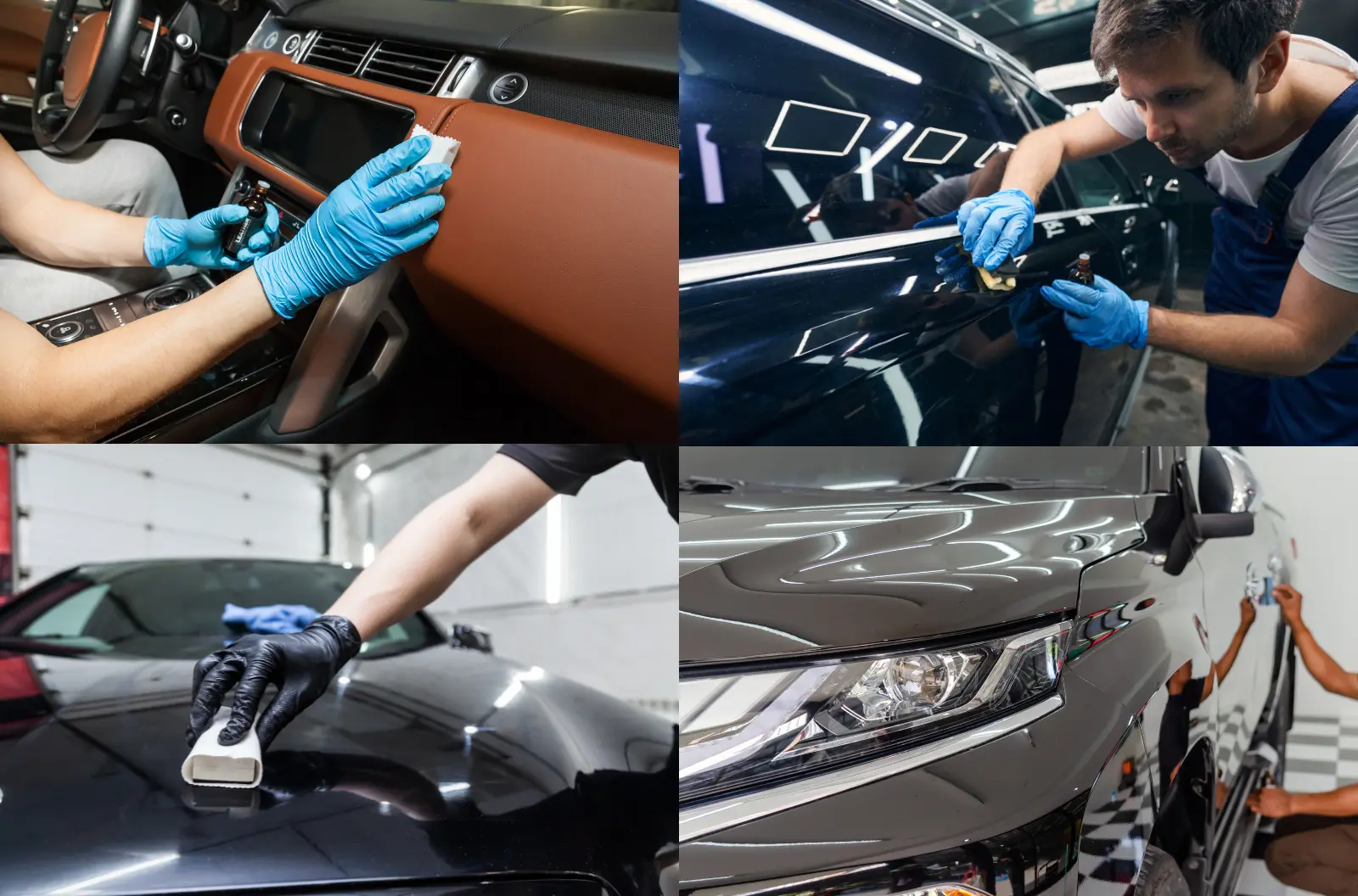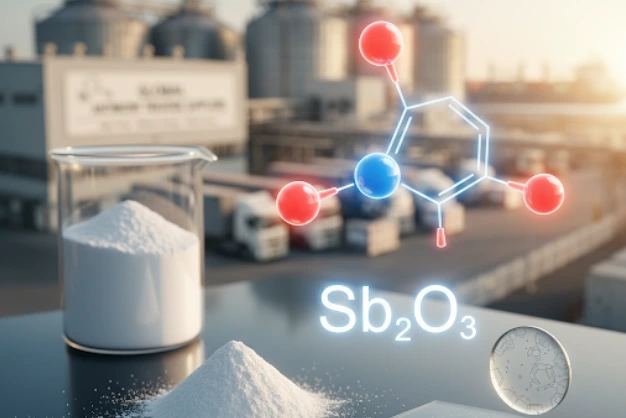Enhanced Protection: Ceramic coatings provide a robust barrier against UV rays, chemicals, bird droppings, and other environmental contaminants, preventing damage to the paint.
Long-Lasting Durability: Unlike wax or sealants that need frequent reapplication, ceramic coatings can last several years with proper maintenance.
Hydrophobic Properties: The coating repels water, causing it to bead up and roll off the surface, which makes washing the car easier and reduces the risk of water spots.
High-Gloss Finish: Ceramic coatings enhance the car’s appearance by providing a deep, glossy finish that makes the paint look vibrant and new.
Ease of Maintenance: Dirt and grime are less likely to adhere to the smooth, coated surface, making regular cleaning quicker and easier.
Cost-Effective Over Time: Despite a higher initial cost, the durability and reduced need for frequent maintenance make ceramic coatings a cost-effective solution in the long run.
By applying a ceramic coating, car owners can ensure their vehicle stays protected and looks its best for years to come, with minimal effort required for upkeep.
Ceramic coating is a chemical polymer solution that is applied to a vehicle’s exterior to protect it from external damage. Here’s how it works:
Chemical Bonding: When applied, ceramic coating forms a chemical bond with the factory paint of the car. This bond creates a new layer of protection that is much stronger than traditional wax or sealants.
Layer Formation: The coating hardens to form a thin, invisible layer on the surface of the car. This layer is extremely resilient and provides a range of protective benefits.
Hydrophobic Effect: One of the most notable features of ceramic coating is its hydrophobic properties. This means it repels water. When water hits the coated surface, it beads up and rolls off, taking dirt and other contaminants with it. This property helps in keeping the car cleaner for longer periods and makes washing easier.
UV Protection: Ceramic coatings protect the car’s paint from harmful UV rays. Prolonged exposure to the sun can cause paint to oxidize and fade. The coating acts as a shield, preventing this damage.
Chemical Resistance: The coating also offers resistance to chemical stains and etching caused by acidic contaminants. Bird droppings, tree sap, and acid rain can be harmful to the car’s paint, but the ceramic layer prevents these substances from causing lasting damage.
Scratch Resistance: While not completely scratch-proof, ceramic coatings do provide a level of scratch resistance. Minor scratches and swirl marks are less likely to occur due to the hard surface created by the coating.
Gloss Enhancement: In addition to protection, ceramic coatings enhance the car’s appearance by providing a high-gloss finish. This deep, reflective shine makes the car look newer and more attractive.
Reduced Maintenance: Since the coating makes the surface hydrophobic and resistant to contaminants, it significantly reduces the frequency and effort required to clean the car. Dirt and grime have a harder time sticking to the coated surface, making maintenance easier and less time-consuming.
By forming a permanent or semi-permanent bond with the car’s paint, ceramic coatings provide an advanced level of protection that helps preserve the vehicle’s appearance and value over time.
Frequency: Wash your car every two weeks to prevent the build-up of contaminants.
Method: Use the two-bucket method—one bucket for soapy water and one for rinsing the mitt. This prevents dirt from being reintroduced to the surface.
Products: Use a pH-neutral car shampoo to avoid damaging the ceramic coating.
The brushes used in automatic car washes can be abrasive and may damage the ceramic coating. Opt for hand washing to maintain the integrity of the coating.
Microfiber Towels: Use high-quality microfiber towels for drying and wiping to prevent scratches.
Wash Mitts: Use soft, clean wash mitts to avoid abrasive contact with the car’s surface.
Technique: Use the blot-drying method rather than dragging the towel across the surface. This minimizes the risk of scratching.
Products: A dedicated car dryer or a leaf blower can be used to blow-dry the car, ensuring a scratch-free drying process.
Cleaning Products: Avoid using harsh chemicals or abrasive cleaners that can degrade the ceramic coating.
Safe Alternatives: Stick to products specifically designed for ceramic-coated cars.
If you notice bird droppings, tree sap, or other contaminants, clean them off as soon as possible. These substances can be acidic and may damage the coating if left for too long.
Usage: Use a ceramic coating maintenance spray periodically to boost the coating’s hydrophobic properties and add an extra layer of protection.
Application: Apply the spray after washing and drying the car for best results.
Frequency: Inspect the coating every few months for any signs of wear or damage.
Action: Address any issues promptly to maintain the coating’s protective qualities.
Example: Chemical Guys Mr. Pink Super Suds Car Wash.
Benefit: Safe for ceramic coatings, effective at cleaning without stripping the protective layer.
Example: CarPro Reload Spray Sealant.
Benefit: Enhances the hydrophobic properties and adds a layer of protection.
Example: Meguiar’s Supreme Shine Microfiber Towels.
Benefit: Soft, non-abrasive, and highly absorbent, perfect for drying and wiping down the car.
Example: Chemical Guys Chenille Microfiber Wash Mitt.
Benefit: Gentle on the car’s surface and effective at lifting dirt without scratching.
Example: Mother’s California Gold Clay Bar System.
Benefit: Removes embedded contaminants, maintaining the smoothness and effectiveness of the ceramic coating.
By following these maintenance tips and using the recommended products, you can ensure that your ceramic coating provides long-lasting protection and keeps your car looking its best. Proper care and maintenance are essential to maximize the benefits of ceramic coating and protect your investment.
Ceramic coatings offer superior protection and enhance the appearance of cars. They provide durability, hydrophobic properties, and UV resistance, making maintenance easier and preserving the car’s value. Understanding how ceramic coatings work and following proper care practices ensures their longevity and effectiveness. Regular washing with pH-neutral products, avoiding harsh chemicals, and using maintenance sprays are key to maintaining the coating. Investing in a ceramic coating is a wise choice for long-term vehicle protection and aesthetics. For optimal results, follow these guidelines and use recommended products.





